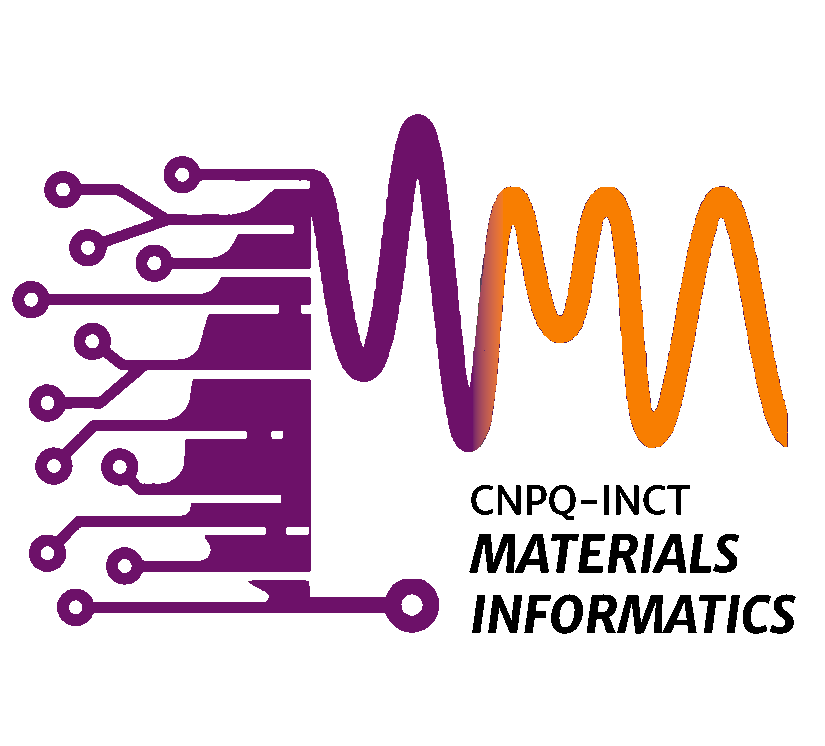Cançado, Luiz G.; Monken, Victor P.; Campos, João Luiz E.; Santos, Joyce C. C.; Backes, Claudia; Chacham, Hélio; Neves, Bernardo R. A.; Jorio, Ado Science and Metrology of defects in graphene using Raman Spectroscopy Journal Article Em: Carbon, pp. 118801, 2024, ISSN: 0008-6223. Resumo | Links | BibTeX | Tags: Defects, Grapehene, Line defects, Liquid-phase exfoliation, Number of layers, Point defects, Raman spectroscopy, Tip-enhanced raman spectroscopy Toriyama, Michael Y.; Qu, Jiaxing; Gomes, Lídia C.; Ertekin, Elif VTAnDeM: A python toolkit for simultaneously visualizing phase stability, defect energetics, and carrier concentrations of materials Journal Article Em: Computer Physics Communications, vol. 287, pp. 108691, 2023, ISSN: 0010-4655. Resumo | Links | BibTeX | Tags: Carrier concentration, Density functional theory, Point defects, Python, Semiconductors@article{CANCADO2024118801,
title = {Science and Metrology of defects in graphene using Raman Spectroscopy},
author = {Luiz G. Cançado and Victor P. Monken and João Luiz E. Campos and Joyce C. C. Santos and Claudia Backes and Hélio Chacham and Bernardo R. A. Neves and Ado Jorio},
url = {https://www.sciencedirect.com/science/article/pii/S0008622324000186},
doi = {https://doi.org/10.1016/j.carbon.2024.118801},
issn = {0008-6223},
year = {2024},
date = {2024-01-11},
urldate = {2024-01-01},
journal = {Carbon},
pages = {118801},
abstract = {This article offers a historical account of the evolution of defect metrology in graphene through Raman spectroscopy over the past five decades. The application of Raman scattering to the investigation of disorder levels in graphite materials dates back to the 1970s, and substantial advancements have occurred in this field, especially following the isolation of graphene in 2006. The article starts presenting the physics related to structural defects disrupting the translational symmetry in crystalline solids, introducing a relaxation of selection rules in Raman spectroscopy that manifests as peaks induced by disorder, then it delves into significant milestones and provides a practical summary of the principal existing protocols. Furthermore, we explore the contribution of tip-enhanced Raman spectroscopy to gaining deeper insights into fundamental aspects of defects in graphene materials, owing to its capacity for spectroscopic measurements with high spatial resolution. In conclusion, we outline prospects for the further utilization of this innovative technique in enhancing both the science and metrology of defects in graphene and its applications in other two-dimensional systems.},
keywords = {Defects, Grapehene, Line defects, Liquid-phase exfoliation, Number of layers, Point defects, Raman spectroscopy, Tip-enhanced raman spectroscopy},
pubstate = {published},
tppubtype = {article}
}
@article{TORIYAMA2023108691,
title = {VTAnDeM: A python toolkit for simultaneously visualizing phase stability, defect energetics, and carrier concentrations of materials},
author = {Michael Y. Toriyama and Jiaxing Qu and Lídia C. Gomes and Elif Ertekin},
url = {https://www.sciencedirect.com/science/article/pii/S001046552300036X},
doi = {https://doi.org/10.1016/j.cpc.2023.108691},
issn = {0010-4655},
year = {2023},
date = {2023-01-01},
journal = {Computer Physics Communications},
volume = {287},
pages = {108691},
abstract = {Phase stability, defect formation energies, and carrier concentrations are closely interrelated features of semiconductors. Due to their joint dependence on the multidimensional chemical potential space, it is challenging to quantitatively establish patterns between these quantities in a given semiconductor, especially when the semiconductor is comprised of multiple elements. To enable synchronous visualization and analysis of these complementary material properties and their interdependence, we developed the Visualization Toolkit for Analyzing Defects in Materials (VTAnDeM). This python-based toolkit allows users to interactively explore how defect formation energies and carrier concentrations vary across the composition and chemical potential spaces of multicomponent semiconductors. Here, we illustrate the computational workflow that employs VTAnDeM as a post-processing tool for first-principles calculations and describe the data organization and theory underlying the visualization scheme. We believe that this software will serve as a useful tool for simultaneously visualizing the often complex and non-intuitive chemical potential – defect – carrier concentration phase space of semiconductors.
Program summary
Program Title: VTAnDeM – Visualization Toolkit for Analyzing Defects in Materials CPC Library link to program files: https://doi.org/10.17632/hz7dyc489v.1 Developer's repository link: https://github.com/ertekin-research-group/VTAnDeM Licensing provisions: MIT License Programming language: Python Nature of problem: Defect thermodynamics are often studied from the perspective of phase stability and defect formation energetics using first-principles calculations. The results are comparable to experimentally-measurable carrier concentrations. However, visualizing all properties simultaneously by exploring the multidimensional chemical phase space is not trivial. Solution method: VTAnDeM offers a graphical interface that allows the user to interact directly with the chemical phase space of a given material and to visualize the defect formation energetics and ensuing carrier concentrations. The computational methods derive from standard defect theory within the supercell approach. The synchronous visualization scheme provides a streamlined approach to analyzing defect-related properties in semiconductors and insulators, all in real time. Additional comments including restrictions and unusual features: Required packages, installation, and tutorials can be found on the Github page.},
keywords = {Carrier concentration, Density functional theory, Point defects, Python, Semiconductors},
pubstate = {published},
tppubtype = {article}
}
Program summary
Program Title: VTAnDeM – Visualization Toolkit for Analyzing Defects in Materials CPC Library link to program files: https://doi.org/10.17632/hz7dyc489v.1 Developer’s repository link: https://github.com/ertekin-research-group/VTAnDeM Licensing provisions: MIT License Programming language: Python Nature of problem: Defect thermodynamics are often studied from the perspective of phase stability and defect formation energetics using first-principles calculations. The results are comparable to experimentally-measurable carrier concentrations. However, visualizing all properties simultaneously by exploring the multidimensional chemical phase space is not trivial. Solution method: VTAnDeM offers a graphical interface that allows the user to interact directly with the chemical phase space of a given material and to visualize the defect formation energetics and ensuing carrier concentrations. The computational methods derive from standard defect theory within the supercell approach. The synchronous visualization scheme provides a streamlined approach to analyzing defect-related properties in semiconductors and insulators, all in real time. Additional comments including restrictions and unusual features: Required packages, installation, and tutorials can be found on the Github page.

